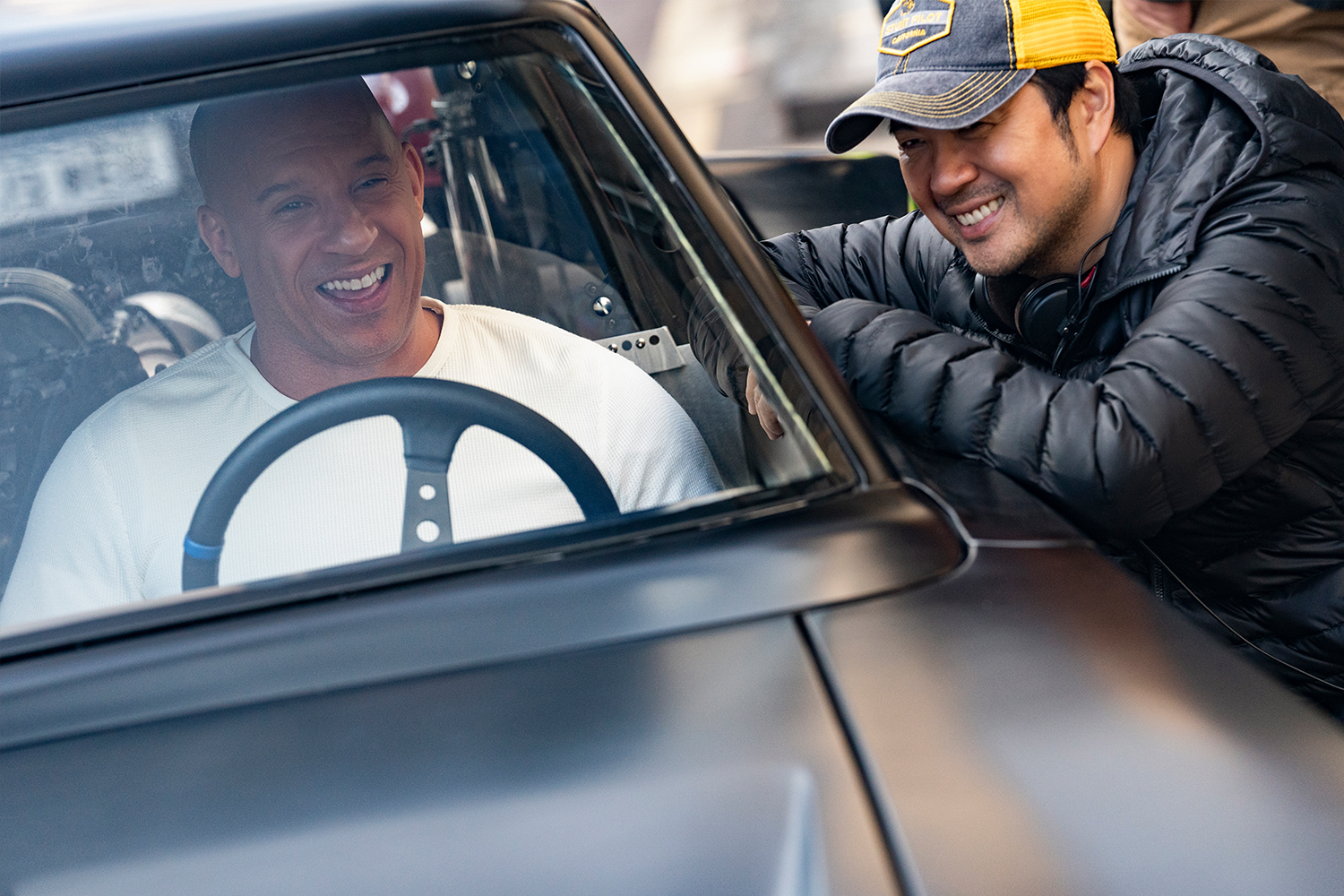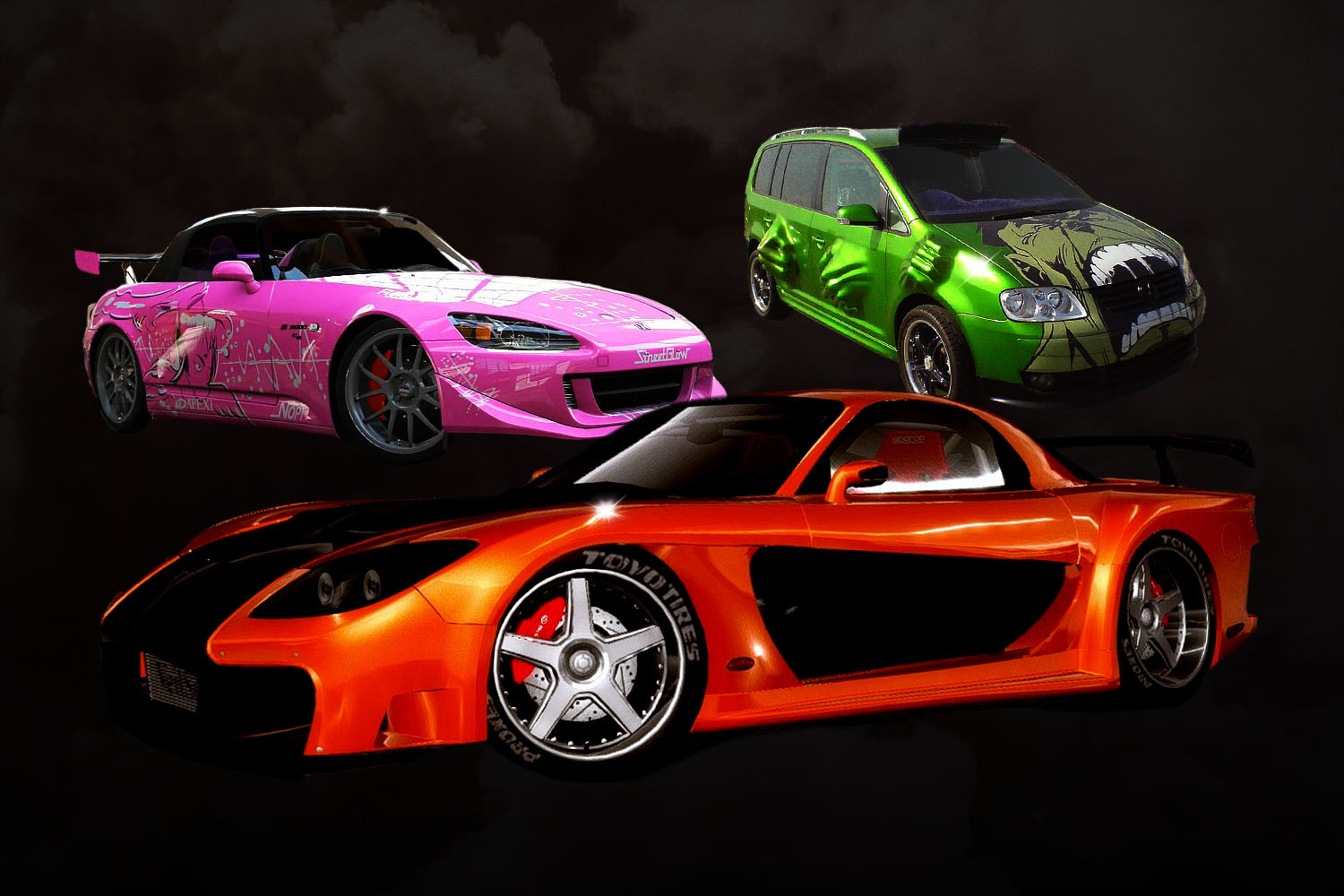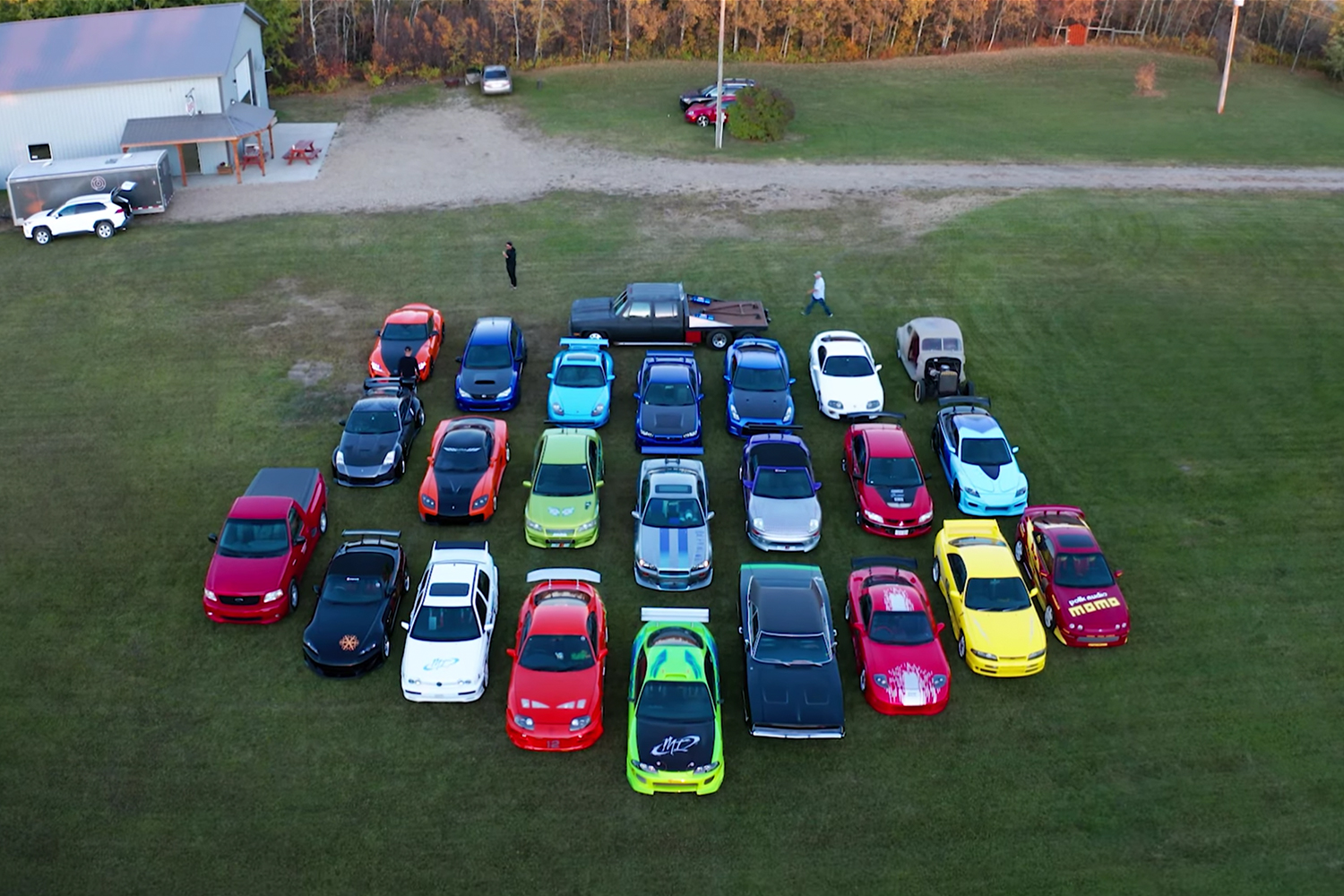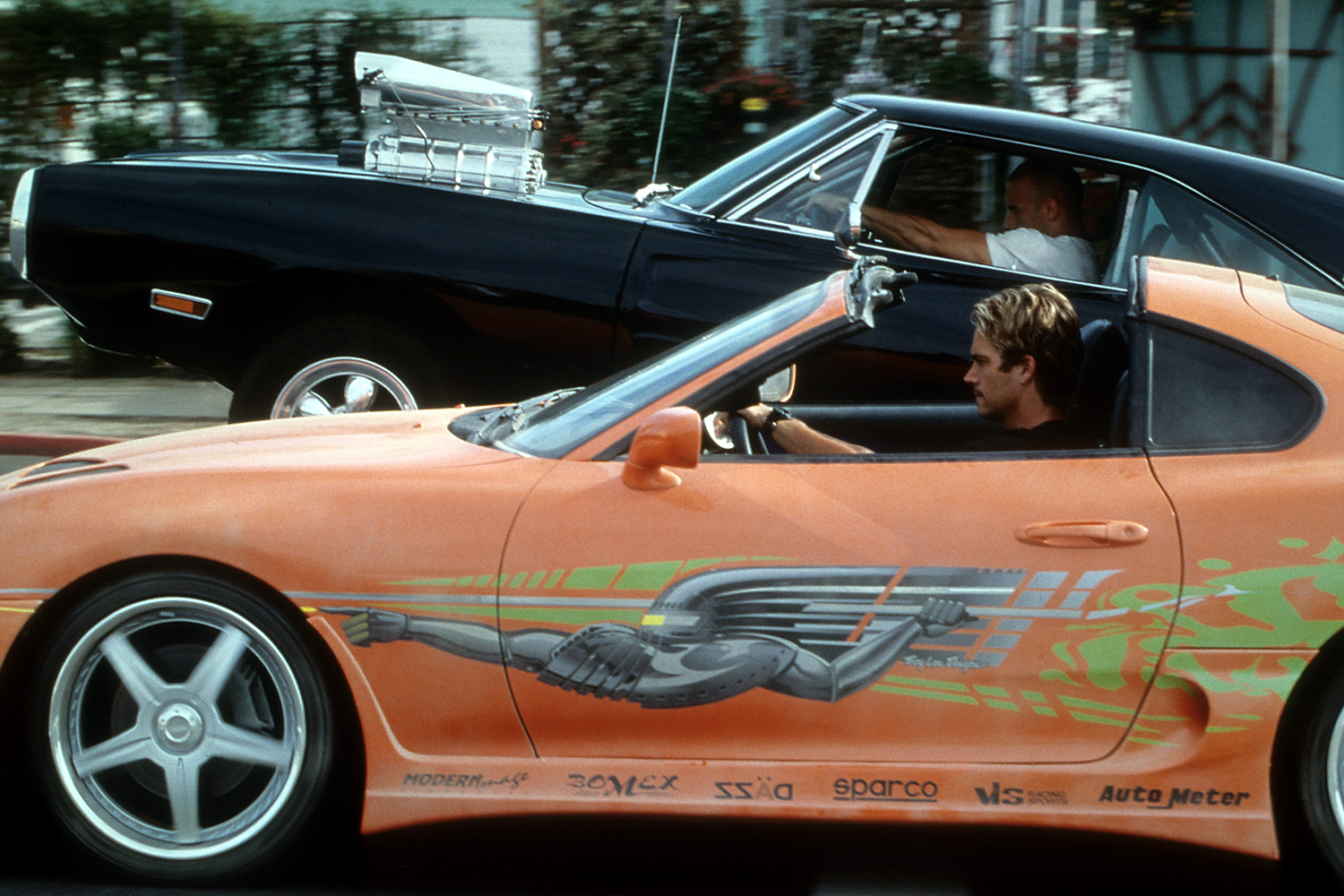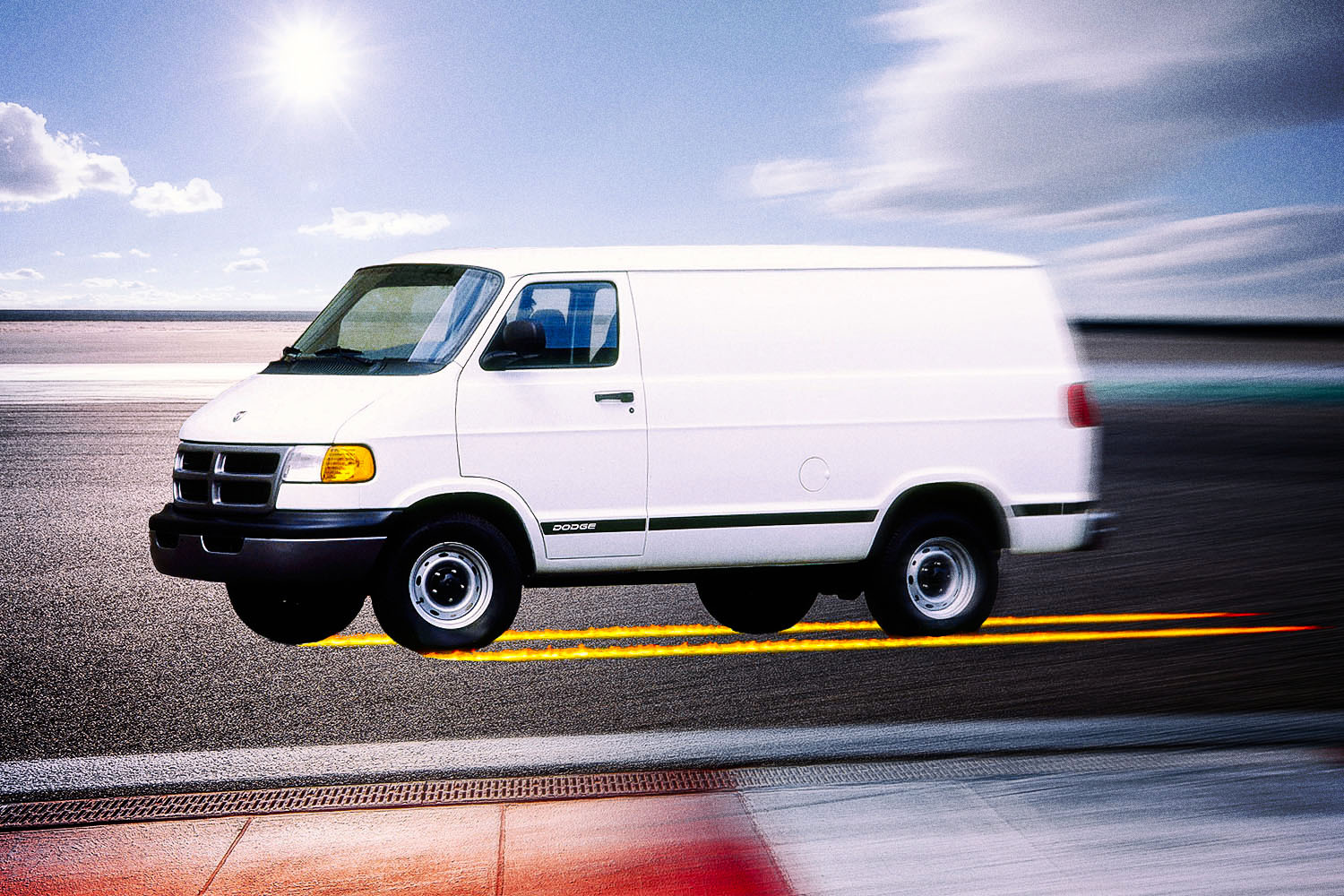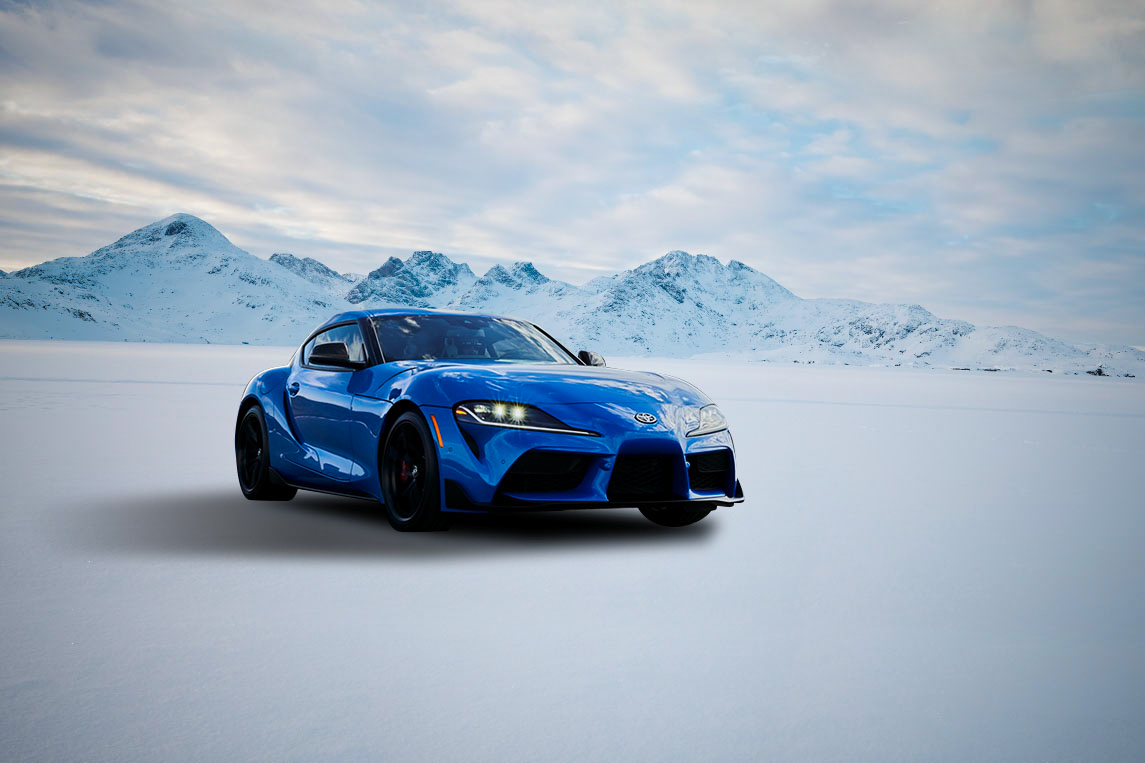Dominic Dubreuil is 36 years old now, but he still remembers seeing the movie Traffic in theaters when he was a teenager. It’s not Steven Soderbergh’s direction or Benicio Del Toro’s Oscar-winning performance that imprinted on his memory; rather, it was a trailer that played while people were still taking their seats. He remembers it looked like “an indie movie with cars” and that it was soundtracked by Limp Bizkit, and he remembers the anticipation afterwards being so great that when the movie finally came out he took the bus to see it by himself because he didn’t have a driver’s license yet.
The trailer was for The Fast and the Furious, the surprise street-racing hit from 2001 that launched one of the most lucrative blockbuster franchises in history, with the ninth installment debuting in the U.S. today (June 25). We just passed the 20th anniversary of the original, but even two decades ago Dubreuil had a feeling the movie would change his life.
“I knew it would be impactful for me,” he tells InsideHook. How impactful? Let’s just say he’s spent so much money on his Fast & Furious obsession that he’s “stopped counting.”
You see, Dubreuil is part of a nostalgia-fueled group of fans who spend their time and gobs of cash building replicas of the cars that star in the films; some even go so far as to track down the exact vehicles used in the movies. To these Brian O’Conner apostles, it’s not enough to simply re-watch Paul Walker, Vin Diesel and Michelle Rodriguez slam the NOS buttons on their souped-up street racers. They need to know what it’s like to get behind the wheel themselves.
For Montrealer Dubreuil, who owns an online magazine and production company called OctaneFix, it wasn’t always ride or die for the Fast franchise. It all started with another famous movie car, a DeLorean, which he was driving a decade ago when he came across another of the stainless-steel gullwing coupes that was gussied up to look like Doc Brown’s time machine in Back to the Future. That’s when the lightbulb went off — you can just build your own movie cars — and in 2015 he found the inspiration he needed to put it into action.
“I saw some of the original Fast & Furious cars in Quebec City, and a couple of hours later I’ve bought a red ‘99 Mitsubishi Eclipse and decided to build a tribute car to Paul Walker’s green Eclipse from the first movie,” he says. “What was supposed to be a cheap look-alike Eclipse turned into a $70,000+ obsession on wheels. My goal was to build a clone of the original hero car.”
The end product ended up being so accurate that it caught the eye of Jorge Acosta, a fellow Canadian and replica builder, who has amassed what may just be the largest Fast & Furious car collection in the world. In an interview with Roads Untraveled last year, Acosta said he owns 23 completed replicas in total (plus one truck that was actually used in the fourth film, Fast & Furious), but has plans to expand to 35 vehicles (including the destructive, barebones Flip Car from the sixth installment, which is currently being built). He actually bought Dubreuil’s Eclipse for his own collection, writing on Instagram, “I know it wasn’t an easy decision [to sell it].”
Dubreuil said Acosta is one of the builders he truly admires, and in the aforementioned interview Acosta said the same of Dubreuil. This camaraderie is found throughout the replica scene; these enthusiasts all follow each other on Instagram, comment on each other’s YouTube tutorials, meet up at car shows wearing T-shirts with quotes and inside jokes from the movies (“Tuna, no crust,” “I live my life a quarter mile at a time,” etc.).
In focusing on the theme of family throughout the franchise, Fast & Furious inadvertently built one in the real world.

If there’s a patriarch of this family, it’s Craig Lieberman, who served as technical advisor on both the first movie and the second, 2 Fast 2 Furious. Both Dubreuil and Acosta have individually pointed to him as an essential resource, someone who helped them in their journey to not only create passable replicas for casual Fast fans, but to craft impossibly detailed reproductions that could fool even the people who worked on the movies. (Actor Chad Lindberg, who played Jesse in the original, sought out Dubreuil in the hopes of building his own version of the white Volkswagen Jetta he drove in the movie.)
Lieberman only worked on those first two films, and as he tells it, no one talked to him about the movies after 2005, because they “kind of fell out of favor amongst hardcore car fans.” But around 2016 he found his trove of notes, videos and photos from his time on set, and his wife convinced him to write a book about his experience. That snowballed into a popular Instagram account, a YouTube channel and eventually a comprehensive website where he has detailed all the specs any interested gearhead would need to build a replica car of their own. If the internet didn’t exist, you can bet Fast & Furious pilgrims would be showing up on his doorstep asking about performance clutches and spoiler styles.
One reason Lieberman can connect with these insatiable car builders is that they’re showing off their handiwork at car shows across the country, the same thing that led him to the Fast & Furious set in the first place.
“I was, 21 years ago, standing at a car show with my little yellow Toyota Supra, and this older gentleman approached me with a Hawaiian shirt and started talking to me … We had a nice conversation and he walked away. That was the end of that,” Lieberman remembers, speaking by phone from his home in California. It turned out people from Universal Studios were looking for someone who not only knew the tuner culture of the first film inside and out, but someone who could help acquire the right cars. Eventually, Lieberman got invited to the studio offices.
“Rob Cohen, the director, got in my car and we went for a little ride, and that’s it,” he says. “That day they hired me as technical advisor and decided that they were going to rent my car and make it one of the main cars in the movie, and here we are 20 years later.”

That yellow 1994 Toyota Supra became the now-iconic Lamborghini Diablo Candy Pearl Orange Supra, with a graphic treatment dubbed the “Nuclear Gladiator,” that was driven by Paul Walker’s Brian O’Conner. (Lieberman also contributed his own Nissan Maxima and R34 Skyline GT-R to the films.) Lieberman has a personal history with Japanese cars like these, his first being a used Isuzu from his father, and he credits both the explosive popularity of the movie and the spinoff replica fandom with tapping into what was then an unsung slice of car culture, at least in Hollywood: the tuner market.
“I mean, how many different ways do you need to see a Chevelle or a Charger or a Mustang or a Camaro? It’s been done to death,” he says, mentioning classic car movies like Bullitt. “Now, the tuner market was predominantly occupied by people from Southeast Asia: it was Japanese people, it was Torrance, California, Filipinos, Koreans, Chinese to some extent, Taiwanese … there was a whole audience screaming for some kind of acknowledgement of their beloved hobby. These people were mostly not into Camaros or anything else for that matter; they just liked the Japanese cars. So it was the right movie at the right time.”
The longevity of these vehicles, what has made them desirable even 20 years after the first movie, according to Lieberman, is that these Japanese cars are what he calls “giant killers”: small, relatively affordable sports cars with four- or six-cylinder engines that could beat the American V8s with the right tooling. Even today, he posits that while some of the models — like the Supra — fetch high prices, a Fast fan could do a cosmetic replica build for as low as $8,000. For a perfect replica, interiors and everything, Dubreuil estimated it would cost you around $50,000.
Then there’s one of the orange Supras Paul Walker actually drove in the first movie: that just sold at auction for $550,000.
Of course, a movie prop is a different beast compared to a mere look-alike, but those who collect the former are part of the same fandom as those who build the latter. In fact, when asked who has the best Fast & Furious car collection in the world, Lieberman mentions Dubreuil and Acosta — as well as the fact that he is “personally aware of more than 50 Eclipse replicas around the world,” in case you doubt his guru standing — but he was unequivocal in the person who takes the top spot.
That would be Gabriel Tremblay, from Zephyrhills, Florida. He’s not just interested in copies, he wants the real thing. He started with a list of vehicle identification numbers (VINs), some of which he got from Lieberman, that correspond to the actual cars used in the movies; then, he hired a private detective to track them down. Some of which were in private collections, some in museums, others more or less forgotten. Wherever they were, Tremblay started snapping them up.

According to Lieberman, Tremblay’s collection includes a Nissan 240SX driven by Letty Ortiz (Michelle Rodriguez), an Eclipse and a red Ford F-150 SVT Lightning pickup both driven by O’Conner (Paul Walker), a black Honda Civic that was used in the original’s heist scene then repainted gold for 2 Fast 2 Furious, and even “the actual red Integra that Ja Rule drove in the first race where he shouts, ‘Monica!’”
“He’s going through and restoring these cars meticulously,” Lieberman says. “He’s making them better than they ever were, even when they were loaned to us.”
When asked why Tremblay is doing this, Lieberman laughs. “Oh, it’s real easy: he’s certifiably insane.” That’s a joke, as he quickly adds that the Floridian is “just a wonderful guy,” but a cynical person might see his endeavor as an investment rather than the machinations of a diehard fan, especially after the bombshell Supra auction (which Tremblay posted about on Instagram, writing, “Everything Fast 1 just shot up big time”). But Lieberman has a unifying theory that he thinks drives the entire Fast & Furious car-collecting fandom, from replica builders to hero car owners.
“It’s about the nostalgia. It’s about feeling young again. It’s like buying your way back to a time when you were young,” the 56-year-old says. “You know, you get in one of those cars and you remember what it was like to be 19 years old with your best girl sitting next to you, a full tank of gas, just got your paycheck from whatever crappy job you had, and now you’re going to the movies.”
While Lieberman helps other people with their nostalgia fix, he uses a more modern Japanese car as his daily driver: a 2015 Nissan Skyline GT-R (which packs 700 horsepower, he might add). But one of his friends recently loaned him an R34 Skyline GT-R, the same model he loaned to 2 Fast 2 Furious all those years ago.
“I’ve been driving that around for the last three weeks,” he says. “I feel 19 again.”
This article was featured in the InsideHook newsletter. Sign up now.

